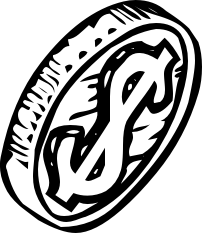All Coin Values resource
website
Sheldon Coin Grading System
P1 circulated
Sheldon Coin Grading System
How to evaluate collectible coins using the Sheldon
Coin Grading System. (pg 1 - circulated coins)
Coin grading systems were created to try to bring about a standardised, methodical
approach to evaluating a coins' state of preservation, relative to mint state.
Many countries have their own versions or systems, however two
primary systems have been adopted by most of the western world:
The European System, and the Sheldon System.
The European system is less defined than the Sheldon System, however takes a
more conservative approach than the Sheldon system. For example, a coin grading
at VF20 on the Sheldon system is likely to be assessed as closer to a 'Fine',
or 'good Fine' using the European method.
It needs to be stressed from the outset that coin and banknote grading is subjective.
Many very experienced graders may look at the same coin and come up with
different assessments, sometimes up to a whole grade, or more.
Grade often does not really take in to account detractors, although many will state a
coin as 'ungradable' if it has significant detractors, such as cleaning, bumps,
scratches, or corrosion.
Help us keep our website 'free to use' for everyone.
We rely on income from our advertisers. Please 'whitelist' this site in your adblocker program.
If you prefer not to see ads, would you consider letting people know we are here instead?
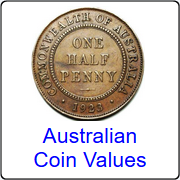
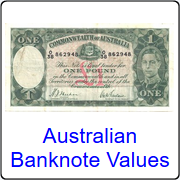
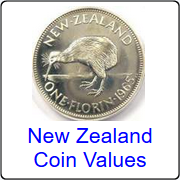
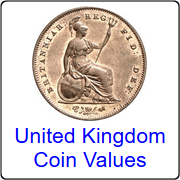
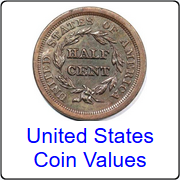
While detractors in themselves will not make a valueable
coin entirey worthless, they will significantly impact
desirability to a collector, thus value.
In the end, the value of a coin is what someone will pay for
it, based on their own judgement of condition, scarcity,
value, desirability, and what they are willing to pay to own it.
If many people desire a particular coin and there aren't
many available, it makes sense that the value is going to
be more than for a coin that is more common, in worse
condition, or is less appealing.
For the purposes of our valuation guides, we assume that
the coin in question has no significant detractors, and is
solid example of the grade in question, in a natural,
unaltered state.
Value and spec information is sourced from various locations, including coin literature, coin dealers, resource websites, and asking price for online sales by reputable coin
dealers. All values are based on what you might expect to pay to buy a coin from a reputable dealer. Many factors affect value aside from grade. For the purposes of our
estimated values, we assume that the coin has no other detractors. All values are estimates only, based on third-party information. AllCoinValues.com do not guarantee
prices to be accurate, nor take any responsibility for how you use the information provided. Our site is maintained by funds from our sponsors and advertisers.
Some of these advertisers may place cookies on your browser to track your browsing habits.
| Abbrev. | Grade |
Description |
| AU-58 | about Uncirculated 58 |
full detail - only
slightest wear on high points |
| AU-55 | about Uncirculated 55 |
full detail - slight wear to less than 50% of surface |
| AU-53 | about Uncirculated 53 | full detail - slight wear to more than 50% of surface |
| AU-50 | about Uncirculated 50 | full detail - slight flatness to highest points |
| XF-45 | Extremely Fine 45 |
detail is complete - mild flatness to higher points |
| XF-40 | Extremely Fine 40 | detail is complete - mild flatness to most high points |
| VF-35 | Very Fine 35 |
detail is complete - minor wear, high points flat |
| VF-30 | Very Fine 30 | detail almost complete - some flat areas to design |
| VF-25 | Very Fine 25 | detail almost complete - moderately wear to design |
| VF-20 | Very Fine 20 | moderate design detail - sharp lettering |
| F-15 | Fine 15 |
slight wear in to recessed areas - sharp lettering |
| F-12 | Fine 12 | moderate wear in to recessed areas - sharp lettering |
| VG-10 | Very Good 10 | significant design wear - letters showing mild wear |
| VG-8 | Very Good 8 | significant design wear - letters showing moderate wear |
| G-6 | Good 6 | flat detail - exterior lettering complete - rims complete |
| G-4 | Good 4 | flat detail - exterior lettering near complete - rims wearing |
| AG-3 | about Good 3 | most exterior lettering readable - rims worn |
| FR-2 | Fair 2 | some detail visible |
| PO-1 | Poor 1 | barely able to see detail - able to identify type and date |
Found the information on our site useful?
Let people know we're here by linking us on your posts, listings, and websites.
